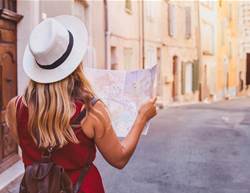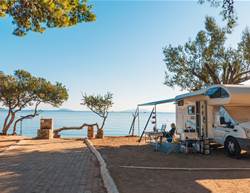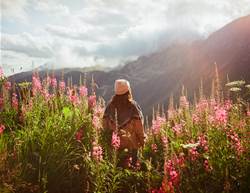There’s something so appealing about the idea of a quick fix – the one thing that’ll make everything work better. For many of our grandparents, it was perhaps a daily spoonful of cod liver oil. For our parents, it may have been a glass of orange juice for breakfast, or a glass of milk before bedtime.
These days, we’ve learnt that there’s no such thing as a cure-all. Unless, that is, you count walking. Regular strolls do more than just improve your cardiovascular fitness and your muscular endurance, they also benefit your mind, allowing you to clear your head and de-stress. So, do yourself a favour and make your next holiday a walking one.
Over the page, you’ll find three rejuvenating hikes that over spectacular scenery along the way, guaranteeing a trip to remember.
From shore to summit

The Milford Track, New Zealand
New Zealand is famous for its diverse landscapes, from serene lakes to verdant forests to snow-capped mountains. On the Milford Track, you can experience them all. This 53-kilometre South Island trail, in the Fiordland National Park, is known as perhaps the grandest of all the country’s hikes, winding its way from low-lying forests all the way up to mountain saddles ringed with cloud-draped peaks over the course of four days.
This walk can be challenging: There are no shortcuts on this point-to-point hike and you’ll have to carry your own supplies as you walk from one mountain hut to the next. Yet the experience is one you’ll remember for the rest of your life.
A boat trip takes you to the starting point on the shores of Lake Te Anau, from where you enjoy an easy start on flat trails through the river valley. Beech forests and fern gullies provide the backdrop for the first section of the trail. From here you head up towards alpine landscapes only a privileged few ever get to experience, including sights such as the plummeting Sutherland Falls, the fifth-highest waterfall in the world, and the stunning Pompolona ice field.
Some people love the Milford Track for the challenge. Day three is considered the most strenuous, when a zig-zagging 14-kilometre hike takes you up and over the Mackinnon Pass, 1154 metres above sea level, where, weather permitting, you can drink in epic views across the mountain peaks. For other people, the beauty of the experiences lies in the freedom of surrendering to the elements. On the Milford Track, the only certainty about weather is that there will be plenty of it. But, as anyone who has walked the trail will tell you, on this hike a good dose of rain can actually increase the magic.
Should a shower come down while you’re walking through the forest, expect to feel the air soften, the loamy forest aroma dial up a notch and the sound of the rain on the leaves providing a gentle syncopation to your steps. If you’re at a higher altitude when the rain sweeps in, watch with delight as dozens of waterfalls cascade into life, transforming rocky slopes into spray-shrouded veils. It’s a sight to behold.
The speed with which the weather can change is one reason that hiking with a guide is recommended. Try Ultimate Hikes’s Milford Track experience, which includes all meals and accommodation at its three private lodges along the track.
Peak experience

Gokyo lakes, Nepal
Long before mountaineers headed to Nepal laden with crampons and ice axes to test themselves against the world’s highest peaks, the Nepalese viewed their homeland through very different eyes. They saw themselves surrounded by a mystical landscape, a place of blessed valleys and sacred mountains, a place to be revered rather than conquered. And that’s still the best attitude with which to explore Nepal: to go slow and with a sense of wonder, rather
than engaging in a race to the top.
If that’s the hiking experience you’re after, then the trek to the magnificent Gokyo Lakes is recommended. The world’s highest freshwater lake system, Gokyo’s five turquoise-tinted lakes are sacred to both Hindus and Buddhists. The waters are dazzlingly beautiful; as with any of the world’s great hikes, however, the best part of the journey is getting there.
This is not a hike to rush. The lakes are located about 4800 metres above sea level, so a steady route that gives you plenty of time to get acclimatised is essential. Expect to walk between five and six hours most days, with occasional longer days and the odd rest day in between.
You can trace your ascent by the changing scenery around you. At the lower levels, Sherpa villages are dotted among yak pastures, interspersed with forests of dwarf rhododendron, red birch and fir, fields of potatoes and buckwheat. Above the tree line, expect remarkable views of glaciers and a dramatic backdrop of 8000-metre peaks. The route will take you past remote monasteries, fast-flowing glacial rivers, and stupas draped with prayer flags overlooking high mountain passes.
Climbing season in Nepal runs between September and May with autumn and spring, when the rhododendrons are blooming, the most popular times. If you can handle the cold, winter can be a surprisingly pleasant option, with fewer rainy moments and days that are cool but clear.
A range of companies offer Gokyo hikes. World Expeditions not only provides full porter service, but also uses its own eco-campsites with permanent tents, raised beds and thick mattresses. Unlike some of the tea houses used by other operators, these campsites have a ban on woodburning, in order to help reverse Nepal’s massive deforestation problem.
Road to glory

The Great Ocean Walk, Victoria
It’s amazing what you find when you leave the road behind. If you’ve travelled the Great Ocean Road before, you’ll know that this celebrated drive offers endless sweeping ocean views along the south-eastern coast of Australia between the Victorian cities of Torquay and Allansford. Step away from the highway, however, and you’ll be astonished by how much more there is to see.
Your path winds its way between the sea and the road, passing through ever-changing scenery from windswept coastal heath to meadows strewn with cheery dandelions. One morning you might walk through fern-filled rainforest gullies and forested slopes where your feet fall softly on carpets of pine needles. In the afternoon, you may stride across sandy beaches as the tides ebb out, stopping to peruse the wonders hidden inside rock pools at the base of soaring sandstone cliffs. It’s astonishing to realise how many different environments are contained along this one spectacular stretch of coast.
The full 110-kilometre trail, from Apollo Bay to the Twelve Apostles, takes eight days. A less taxing option is the four-day version covering 40 kilometres from Castle Cove to the Twelve Apostles offered by the Australian Walking Company. Instead of going point to point each day, you base yourself at the Twelve Apostles Lodge, returning each evening to enjoy a foot bath before settling in for a three-course dinner. The next morning, your shuttle drops you off at the point where you finished the night before.
This set-up allows you to travel light, your daypack containing not much more than your lunch and your water bottles. (Your guide’s pack, however, contains everything from first aid supplies to the picnic blankets, which you’ll sit on for your lunches.)
Perhaps the most startling thing about the Great Ocean Walk is how removed you feel from the world. The breezes that play across your face smell of sea salt, pine and eucalypt; the soundtrack consists of the rustle of tall grasses you walk through, or the whisper of waves on the sand. Every day brings a new surprise – perhaps a sighting of a koala high up in a tree, or the chance to pick wild blackberries that hang plumply from bushes, the perfect track fodder.



.jpg&h=90&w=90&c=1&s=1)






